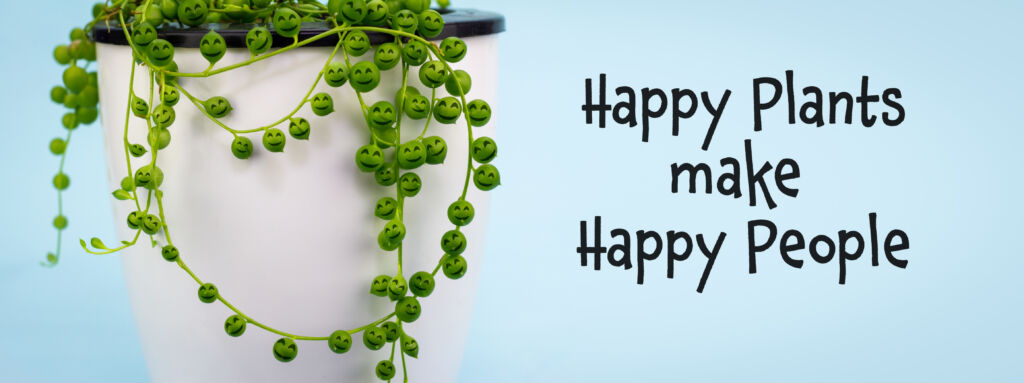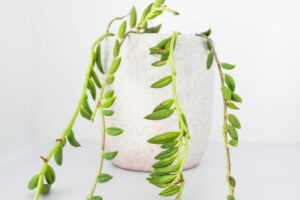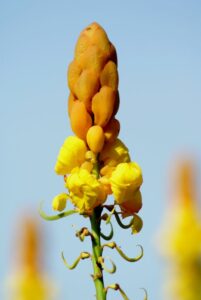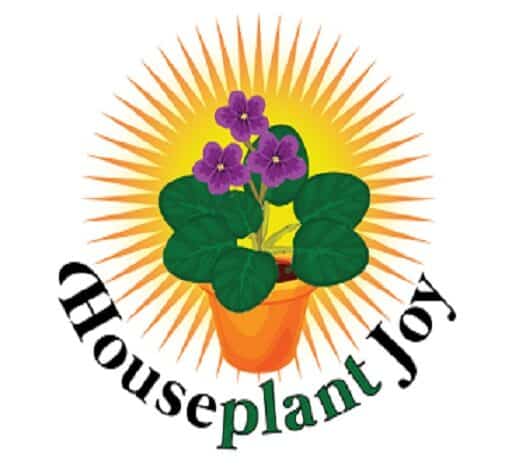HousePlantJoy is supported by our audience. When you purchase through one of our links, we may earn a small affiliate commission. As an Amazon Associate I earn from qualifying purchases. Your cost is not affected.
==================
Learn About Varieties Of Senecio Plants
Different Types of Senecio plants or “ragworts” are around and there is plenty of them. What’s also fascinating is that each has interesting features to offer. Belonging to the daisy family, the unique types may look the same at a glance. But it’s also easy to figure out that they only share common characteristics. These drought-tolerant succulents are fleshy and flowering which makes them look quite attractive. Withstanding light watering and partial to full sunlight, they make exceptional houseplants. Some even take care of them in their yard. So it isn’t surprising why many homes use them as ornamental inside and garden plants.
In this post, we’ll take a look at the different Senecio species houseplants. In doing so, we will see their distinctive characteristics and how best to take good care of them. Thus, if you’re focused on knowing more about these plants, please keep reading.
Why Care For Varieties Of Senecio Plants
Because of the way they look, Senecio houseplants are quite decorative. For the most part, they have plump leaves that come in a variety of colors, shapes, and sizes. Plus, these succulents also bloom and display diverse corolla and hues. Compared to other flowering plants, they are low-maintenance and ornamental too. Varieties have remarkable attributes. The variants are cascading, fuzzy white, shrub, upright snake, and blue ground cover. Thus they are great in home design and don’t demand a lot of attention.
Like most succulents, they are great to have around since they clean the air. To purify the atmosphere, they absorb carbon dioxide. They do so as a part of how they do photosynthesis. While at it, they may also take in other toxic materials floating in the environment. Plus, they can thrive in humid places and are easy to propagate. Compared to other plants, they turn dormant in summer and can withstand winter frost. So it’s reasonable why many gardeners and horticulturists find the varieties worth it.
Cascading Varieties Of Senecio Plants
These are hanging types, demonstrating long stems and often placed in tall places. Some homeowners keep them low and looped on the ground. Yet it’s common to see them cascading above large baskets, structures, and containers. When they are on top of something, gardeners lay their stems on the soil and secure them with gravel. That is while spraying them with a bit of water to get them moist and waiting for them to develop roots. To make a home interior or outdoor garden glamorous, these varieties can help. So it isn’t a mystery why these Senecio houseplants are around beautiful properties.
Curio × peregrinus
Called the dolphin necklace or string of dolphins, it’s a succulent with white blooms. That would be on the ends of some of the pointy-shaped leaves. Also, these delicate flowers from the plant start to appear during the spring and reach fall. The puffball-shaped blooms have filaments with red and yellow hues too. The plant also has fleshy leaves that many see as resembling dolphins leaving the water. The look of it is likely the result of being a cross of the string of pearls and hotdog cactus varieties. So, with its unique attributes, many find it intriguing.
This variant likes warm climates since it stores water in its leaves. With this feature, it’s easy to say that it lacks hydration when its foliage turns flat. Also, what’s good about it is that it’s a hardy plant. Although for a while only, it can thrive in freezing temperatures. Yet, since it does best in warm conditions, taking it indoors and providing light and heat is ideal. Hence, almost anyone can include it as a part of their collection of varieties of Senecio plants.
Curio rowleyanus
Also often planted in containers situated above, this variant is also pleasing to see. Many even treat it as an example of the most popular Senecio houseplants. It’s a prized plant due to its distinctive appearance too. It has plump and round or spherical foliage, trailing along the succulent vines. But the creeping perennial cannot tolerate too much cold. Hence, people in areas with frosty weather ought to keep this one as an indoor plant instead. Besides, it grows so well with bright or even indirect sunlight. So, even if has certain limitations, it’s still an adaptable kind of vegetation.
Its ball-shaped and pea-sized leaves get larger as it grows and thus these parts turn heavier too. Because of that, it would be smart to put them in pots with thick rims. It’s to prevent cutting off the vines by accident when the leaves get heavy. Still, don’t delay since this is a succulent that grows fast (especially when it matures). Cut off dying and dead parts of it too. Thus it’s a low-maintenance type of plant that needs a bit of attention from time to time to keep it well.
Fuzzy White Senecio Types
As their name implies, these variants have white layers that draw people. That is to say, unlike other plants, their fleshy leaves have a chalky hue and tangled texture. Even if growing them can turn complicated, they are still drought-tolerant succulents. They are even strange as varieties can be sensitive to excessive watering, peel, and look flat. So, with their peculiar characteristics, they are interesting to grow and display.
Senecio haworthii
This vegetation of the Senecio houseplants has fleshy oval leaves with a frizzy feel to it. It’s also striking due to the greyish color of its stems and foliage. Also called the cocoon plant, it adapts well to warm places. But it can also manage for a while when it starts freezing. After all, like other succulents, it’s can take low humidity and dryness during winter. Still, because of the way it looks, it’s perfect for home design. With its appearance, it resembles a ghost and that’s a good thing. So amateur gardeners and expert horticulturists also find it interesting.
Its yellow flowers with curly filaments can surface during summer or even wintertime. Also, it has more than white hairs on its leaves. Aside from blooming and fleshy leaves with cobweb-like texture, it’s also quite rare. After all, it’s a plant that is native to the southernmost part of Africa. So, with that alone, this succulent is worth keeping.
Senecio scaposus var. addoensis
It’s interesting to note that this is also one of the most unique varieties of Senecio plants. Like other succulents, it comes with fleshy parts too. What makes it peculiar is that its leaves have broad and rounded ends. When you touch it, you would feel that there’s a curve or lobe at the tips. It has soft and short hairs on the leaves that serve as protection from intense sunlight. Yet these structures shed as the plant matures. With these things, it’s clear why it’s treated as part of the appealing varieties of Senecio plants.
It still needs watering in the summer but, as a succulent, it requires less of it. Getting the soil where it stands moist is already enough. Be prudent when fertilizing it too. Too much fertilizer may cause the roots to rot or result in a leggy plant. Since they love it outside, you need to take these houseplants outdoors too. They need sunlight and appreciate being outside in spring, summer, and early fall. Yet it’s best not to leave them out the entire day since their leaves can still burn and wither. Even if they have certain demands to thrive, they are not difficult to grow. Hence, they are still plants worth keeping as companions and decorations.
Shrub Varieties Of Senecio Plants
These types of Senecio houseplants can be indoor plants but are way better outdoors. The reason is that they tend to become tall and heavy. Also, they bend and fall to hit the ground as their natural way to propagate. When this happens, even their stems grow roots. This can be unattractive for some so cutting may be crucial. Besides, trimmings can grow more of these plants. Hence, many gardeners make these a part of their front space or backyard too. Still, due to their height and structure, they make fine ornamental pieces outdoors.
Senecio anteuphorbium
Called Swizzle Sticks and from Morocco, it’s also an uncommon succulent. As a succulent plant with a slow growth rate, people need patience but won’t have trouble taking care of it. It’s also a deciduous shrub with an upright stem that has fragrant blossoms that come out in fall or winter. Hence, it gets tall and is frost tolerant. What’s special about it is that it becomes dormant in summer when other plants are often active. Yet it always requires at least partial sunlight to thrive. So folks also grow it to have varieties of Senecio plants.
Senecio crassissimus
This is another one of the Senecio houseplants worthy of being a part of a garden. Its distinctive features include purple stems and plumpy blue-green leaves. The Vertical Leaf can also handle drought but not intense cold. Hence, it must be inside before the wintertime or in places where it’s often freezing. If possible, put it where there’s direct or full sunlight as it’s fine with it. Never feed it too much water for it to avoid being too soft or mushy. Plus, an overwatered plant usually attracts pest insects. As for where it stands, you may even have to put it on soil with sand that has good drainage. Thus it’s the kind of fleshy plant that looks good but needs a few things for care.
Upright Snake Senecio Varieties
These varieties of Senecio plants may be odd to a lot of gardeners due to how they present themselves. These vegetations resemble linked sausages. Yet, usually, they come with lines or stripes. Still, they are awesome to keep since they produce flowers with a variety of colors too. In that way, you could consider adding them to your collection of succulents. After all, they can add a design with their beauty and oddity.
Curio articulatus
This plant goes by many names. Some call it candle plant while it’s hot dog cactus for others. In any case, it “sleeps” throughout most of the year. When winter comes, it looks alive with its fresh set of pinkish blooms and fleshy leaves. It always comes with sausage-like and bluish-to-gray stems. When inside, it needs a bit of sun and it’s fine to leave it outside in full sunlight. Yet, like other vertical succulents, too much light will make them leggy. So, when caring for one, it would be wise to limit its sun exposure. Yet don’t hesitate to keep bringing it out and leaving it in the open sometimes. It’s still one of the varieties of Senecio plants that can add aesthetic appeal to your garden.
Watering it isn’t challenging since it’s drought-tolerant. Even if it is that way, you need to make sure that the soil stays moist where it stays. That’s especially when it’s the growing season. Compared to other succulents, it may be able to handle more fertilizer too. Despite needing care, it displays clusters of whitish and cup-shaded flowers. Thus it’s still an artistic and admirable plant to keep.
Blue Ground Cover Varieties Of Senecio Plants
Senecio Cephalophorus
It’s very distinctive with its bluish or grayish leaves resembling the shape of a paddle or lance. Aside from it also has reddish and fluffy rosettes growing out of it. It’s quite an eye-catching plant to place in a garden due to these characteristics. People even call it the Senecio Mountain Fire because of its attractive blooms. It’s also great to grow since it doesn’t demand plenty of water. You still need to give it water but spraying from time to time may be enough. During winter, you can leave it to survive while it blooms. It needs shelter during summertime too. Hence, it’s what you can leave to decorate a place yet must have special care too.
Blue Ground Cover Senecio Houseplants
If you wish to have stunning blue hues in your indoor or outdoor garden, go for these fleshy plants. A few of these varieties of Senecio plants can already do a lot for your landscape. Rooms may become more relaxing with these things inside. Their plump and cylindrical foliage often give azure, grayish, or even blue-greenish colors. With too much light, these structures may turn purplish too. Yet one of the main downsides of having them for some people is that they are slow to grow. Thus they are ornamental but may be ideal for patient individuals.
Curio repens
Many folks call it Snake ragwort or Senecio serpens. It is native to Africa and found living in rocky mountain cracks. With that said, it’s the type of succulent that doesn’t demand a lot of maintenance. Even if it’s a low dwarf shrub, it turns dense after maturing. From June to late November, it starts and continues to bloom. In that way, it belongs to varieties of Senecio plants that are very ornamental. Yet, to develop, it requires sandy and well-drained soil. It also thrives in an environment with almost absent to medium dryness. So it requires plenty of light but tolerates heat or drought.
Animals like rabbits and deer are not drawn to it but it’s toxic to other creatures. We can say that it’s included in the Senecio houseplants with inedible parts. That is to say, it’s something that isn’t ideal for homes with pets like horses, cats, and canines. But, since its leaves point upward and groups of it develop, they can serve to cover a garden plot.
Senecio mandraliscae
These are the varieties of Senecio plants that show shades of silver and blue. Gardeners use their plumpy and finger-like foliage to add landscape hues. Horticulturists also prefer them because they grow fast and can serve as a yard carpet. In mid-summer, they produce off-white blossoms that make a garden charming. Still, these are succulents that grow 1 foot or 1 foot and a half long with about 3-inch or longer leaves. Hence, they are very fancy and practical to have around.
They have certain seasonal maintenance requirements, like most indoor and outdoor succulents do. But they aren’t demanding to take care of at all. When outside, it likes high temperatures and thrives in full sunlight. The coating on the leaves is there as their natural sunscreen too. Watering them isn’t difficult too. The soil needs to be dry before bottom spraying once more to avoid overwatering. Plus, propagating them is convenient since all you must do is trim the stem and plant the cuttings on the ground. So it’s clear why many treat them as the finest Senecio houseplants to care for.
Last But Not The Least
Even if there are thousands of varieties of Senecio plants, some are popular. It pays to know what they are since you may want to add some of them to your indoor or outside garden. Besides, several Senecio houseplants have exceptional features that make them superior as decorations. Identifying them also means knowing how to take care of them best. Still, even if they are poisonous when ingested, ways to make them inaccessible are there. So Senecio houseplants are useful and can be safe to use for home improvement. It’s why there’s no reason to hesitate to bring any of the ones mentioned in this article at home.
We hope that you found this article informative, useful, and entertaining somehow. We wish that you find the perfect set of succulents, flowering or otherwise, to add to your space. Thanks for spending time to read this post and good luck with your gardening!










